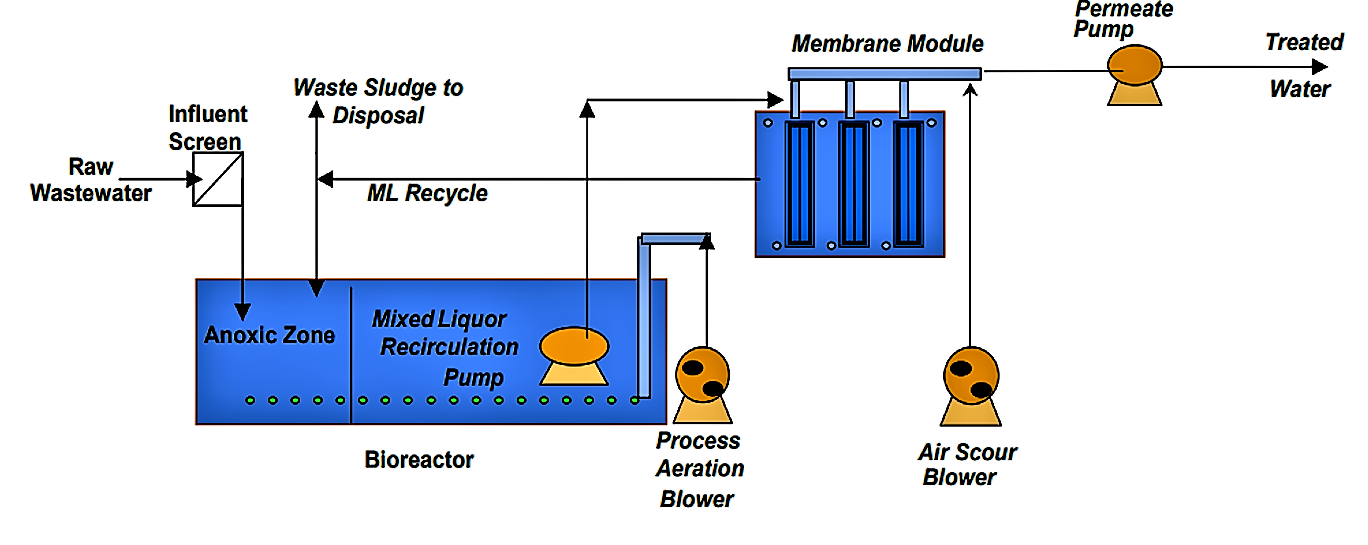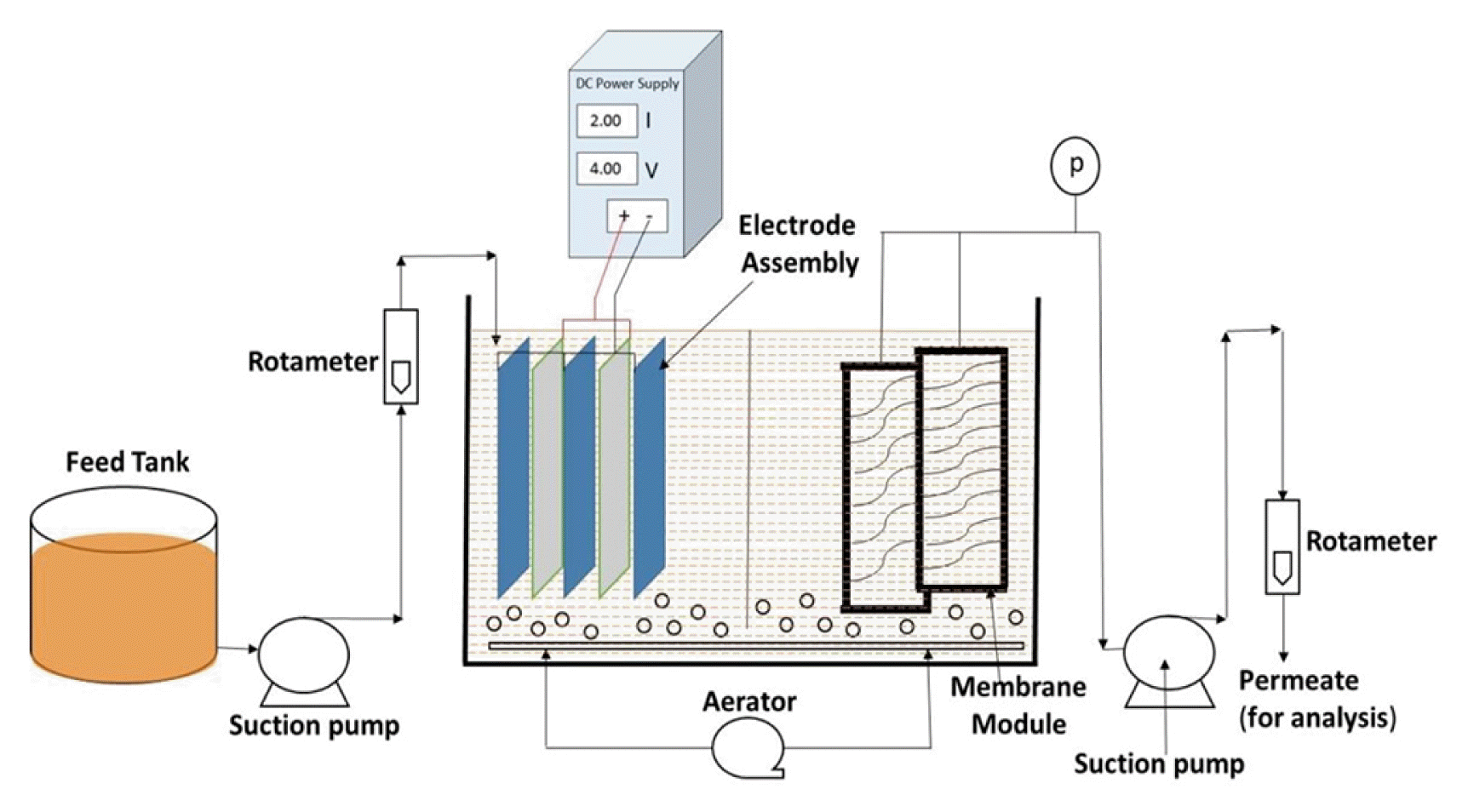How Membrane Bioreactor Technology Is Revolutionizing Wastewater Treatment
How Membrane Bioreactor Technology Is Revolutionizing Wastewater Treatment
Blog Article
Just How Membrane Layer Bioreactors Are Revolutionizing Water Purification Equipments
The appearance of membrane bioreactors (MBRs) stands for a considerable innovation in the area of water purification, combining organic treatment procedures with advanced membrane layer filtering modern technologies. As global water shortage heightens, the function of MBRs in assisting in potable water reuse and sustainable water administration becomes increasingly crucial.
Introduction of Membrane Layer Bioreactors
Membrane bioreactors (MBRs) represent a substantial advancement in water purification innovation, as they integrate organic treatment procedures with membrane layer purification. This assimilation enhances the efficiency of wastewater treatment by utilizing microorganisms to weaken organic contaminants while simultaneously utilizing semi-permeable membranes to different treated water from put on hold solids and microorganisms.
The MBR system usually contains an organic reactor where the microbial population metabolizes contaminants, followed by a membrane layer filtering system that maintains biomass and permits just clean water to pass through. This double functionality results in higher effluent top quality contrasted to conventional therapy approaches. MBRs can be operated in both batch and continuous flow modes, offering adaptability in style and application.
Additionally, MBRs are characterized by their compact impact, making them appropriate for city setups with space restraints. Membrane Bioreactor. They also allow the recuperation of water for reuse, hence adding to water sustainability efforts. While MBR technology has acquired appeal in community and industrial applications, its operational complexities and energy demands require cautious consideration during application. In general, MBRs go to the leading edge of improving water therapy performance and high quality, showcasing the possibility for ingenious remedies in environmental administration.
Advantages of MBR Innovation
The combination of organic treatment with membrane purification offers many advantages for water purification procedures. One of the key advantages of Membrane Bioreactor (MBR) innovation is its capability to efficiently eliminate both natural and inorganic contaminants, resulting in premium effluent. The membrane layers work as a physical barrier, protecting against put on hold solids and pathogens from travelling through, which enhances the total security and dependability of treated water.
In addition, MBR systems need a smaller sized footprint compared to conventional therapy techniques, allowing for a lot more reliable room use. This portable layout is especially beneficial in metropolitan setups where land is restricted. MBRs likewise show functional adaptability, fitting varying influent qualities and circulation rates without substantial performance destruction.
In addition, the procedure provides enhanced nutrient removal abilities, specifically for nitrogen and phosphorus, which are crucial for preventing eutrophication in getting waters. The decreased sludge manufacturing related to MBR modern technology likewise translates to lower disposal costs, making it a cost-effective remedy over time - Membrane Bioreactor. Overall, the benefits of MBR modern technology placement it as a leading option for ingenious and sustainable water purification systems, dealing with both environmental and economic problems
Applications in Water Filtration
Applications of Membrane Bioreactor (MBR) technology in water purification are impactful and varied, dealing with various therapy needs across numerous markets. MBRs efficiently integrate organic treatment processes with membrane layer purification, making them excellent for municipal wastewater treatment, commercial effluent management, and even safe and clean water reuse efforts.
In municipal settings, MBRs are progressively utilized to enhance the top quality of dealt with wastewater, permitting for conformity with rigorous discharge regulations and helping with the recycling of water for watering and Learn More non-potable uses. Their portable layout additionally makes them suitable for city environments where space is limited.
Industrially, MBR technology is made use of to deal with process water and wastewater, especially in sectors such as food and drink, drugs, and fabrics. By successfully removing contaminants and put on hold solids, MBRs assist markets lessen environmental effects while recovering important sources from wastewater streams.
Moreover, MBRs are gaining traction in decentralized water treatment applications, where small systems can be released in remote areas or developing areas. This flexibility makes it possible for neighborhoods to accomplish sustainable water administration services, improving accessibility to tidy water while minimizing reliance on conventional therapy approaches.
Study and Success Stories

In another example, a fabric production center in Bangladesh adopted MBR innovation to address its wastewater obstacles. The system reduced chemical oxygen need (COD) degrees from 1,200 mg/L to much less than 100 mg/L, therefore satisfying governing standards and substantially lessening environmental influence.
The College of Cape Town's MBR setup has verified effective in treating greywater for non-potable reuse on university. This task not only saves drinkable water however likewise works as an instructional design for lasting techniques.
Moreover, a fish and shellfish processing plant in Norway used MBR technology to deal with effluents having high degrees of organic issue, attaining over 90% toxin removal. These study emphasize MBR modern technology's flexibility and its important role in boosting water top quality across varied applications.
Future of Water Treatment Solutions
As worldwide water deficiency and air pollution challenges escalate, ingenious water therapy options are coming to be increasingly crucial to guarantee lasting accessibility to tidy water. The future of water treatment exists in the combination of innovative technologies that boost the efficiency and efficiency of purification processes. Membrane layer bioreactors (MBRs) go to the forefront of this evolution, incorporating organic therapy with membrane layer filtering to create top notch effluent ideal for numerous applications.

Emerging trends such as resource recuperation from wastewater, including nutrients and energy, will certainly further transform treatment centers into environment-friendly centers. Developments in nanotechnology and membrane layer materials assure improved performance and longevity of purification systems.

Verdict
To conclude, membrane layer bioreactors represent a substantial development in water filtration innovations, successfully integrating organic treatment with advanced membrane layer filtering. The various benefits, consisting of improved Full Article effluent high quality and decreased spatial requirements, make MBRs specifically ideal for city applications. Their role in drinkable water reuse and lasting water management highlights their significance in addressing worldwide water scarcity challenges. Proceeded research study and growth will additionally improve the effectiveness and fostering of MBR innovation, making certain a resilient future for water treatment solutions.
The development of membrane bioreactors (MBRs) stands for a significant advancement in the field of water filtration, merging biological therapy procedures with innovative membrane purification modern technologies. As worldwide water deficiency escalates, the role of MBRs in promoting drinkable water reuse and lasting water management comes to be progressively vital. They additionally allow the recovery of water for reuse, hence contributing to water sustainability campaigns.As worldwide water deficiency and contamination challenges escalate, innovative water treatment services are ending up being significantly essential to guarantee sustainable accessibility to tidy water. Their role in drinkable water reuse and sustainable water management highlights their value in dealing with global water scarcity challenges.
Report this page